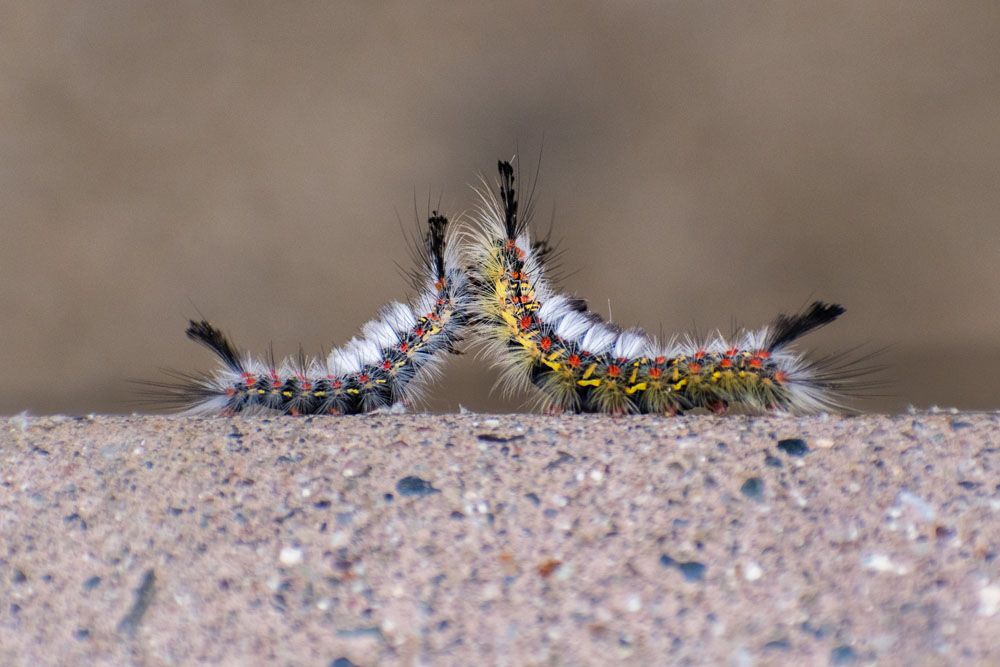
Western Tussock Moth – Orgyia ventusta
Western Tussock Moth – Orgyia ventusta
Scientific name: Orgyia ventusta (previously called Hemerocampa vetusta)
Common name: Western tussock moth
Appearance: Western tussock moth is a small, brown moth with round wings. It has warm brown hindwings with tinges of orange and slightly darker margins. A few irregular, dark markings are also seen on top of the male wings. The head and body are grayish-brown. The antennae are broad, with males having broader antennae. Since the female moth is flightless, it has a heavier body. The larva is initially black with long bristles, which gets reduced to a tuft of gray hairs and reddish-yellow spots as it ages.
Host plants or food: Western tussock moth feeds on broad-leaved forbs and trees, such as apple, oak, willow, cherry, and lupine.
Territory: Throughout North America
Mode of damage: Western tussock moths are leaf chewers and damage the foliage of their host plants
Habits and life history
Western tussock moth females lay 125 to 300 eggs. Unlike other moths whose larvae overwinter, the eggs of western tussock moth overwinter.
The eggs hatch into the larvae during spring, which then pupate in a cocoon made of discarded hairs.
Adult moths emerge from the pupae from April to May.
Female moths are flightless. They only have vestigial wings.
The young ones make a silk balloon to move themselves around.
It produces one generation per year.
